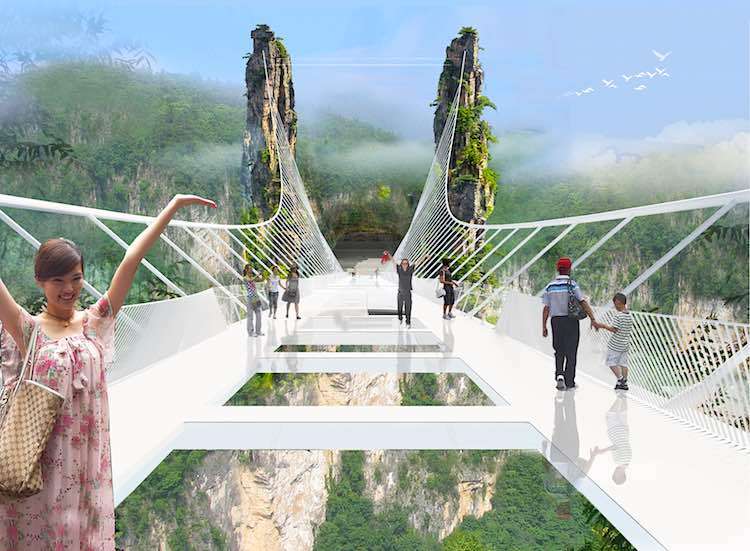Donated Laptops Are Flying Right Into Laps of African Entrepreneurs
Now you can donate the key for business success to a mom opening an internet café or a repairman needing a better filing system–on the other side of the world.

If you've ever wondered what it would be like to stand suspended over a 980-foot canyon, plan on taking a walk over this 1,410-foot-long glass-bottomed bridge in Wulingyuan National Park.
With towering sandstone-quartz pillars and dramatic scenery blanketed in lush vegetation, the park located in the Hunan province of China is a breathtaking area of natural beauty, and best known as the landscape that inspired James Cameron's movie Avatar.
The Zhangjiajie Glass Bridge will be the highest glass-bottomed bridge in the world when it is completed at the end of this year.
The designer responsible for the bridge, Israeli Architect Haim Dotan, strove to minimize its impact on the wider beauty of the park.
"I believe in nature, balance, and beauty. Nature is beautiful as it is," he said. "One wants to make the least impact upon it. Therefore, the bridge was designed to be as invisible as possible–a white bridge disappearing into the clouds."
Two steel side beams will be used to frame a series of glass panels, and suspended cables will support the banisters. As a result, the bridge should achieve the impression of feather-like lightness.
Yet, it balances ethereal lightness with super-strength. The structure is projected to be able to withstand high winds, earthquakes, and the weight of 800 visitors.
Declared China's first national park in 1982 and named a UNESCO World Heritage Site in 1992, Wulingyuan has welcomed an increasing numbers of visitors, tourists who have been accommodated with a series of man-made interventions that provide maximum access to points of interest.
The park already boasts structures like the Tianmen Mountain Cableway, which carries visitors over some of the most spectacular terrain of the park, and the 1070-foot high Bailong Elevator – the world's tallest glass elevator – which debuted in 2002. In 2011, the park also opened the glass skywalk on Tianmen Mountain, allowing park-goers to skirt its sheer cliffs.
When it opens to the public in January of 2016, the Zhangjiajie Canyon Bridge promises to be the park's most daring attraction to date.
– (Click to Share)
Be the first to comment